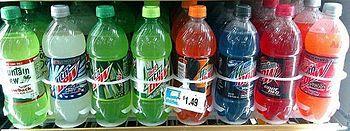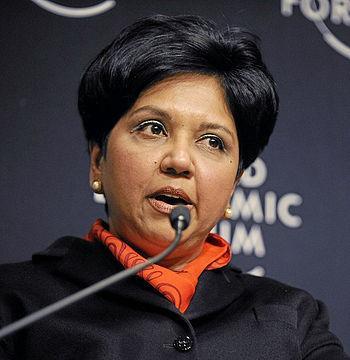
Eight flavors of Mountain Dew in a grocery store display cooler. (Photo credit: Wikipedia)

A logo used, and trademarked, by PepsiCo for Mountain Dew in the 1970s. (Photo credit: Wikipedia)

Indra Nooyi (Photo credit: Wikipedia)

PepsiCo (Photo credit: Wikipedia)
Read the PepsiCo Cohesion Case on P. 24-35 in your textbook. One third of all the end-of-chapter exercises apply chapter concepts to the PepsiCo case.
“Indra Nooyi, CEO and Chair has once again, exceeded analyst’s expectations and dire forecasts: Despite a global decline in the consumption of sugary drinks, the company’s shares have increased 3.1% while the S&P 500 Index added less than 1%. How’d she do it? Thinking outside the soda can. In 2013, PepsiCo products accounted for nine of the top 50 new food and beverage introductions in the U.S. Aside from new products, recent Nooyi-led innovations include smaller package sizes. She did not give way to recent pressure to split the company to slash costs and spur growth. Instead, she pledges to keep the company undivided while improving performance and cutting $5 billion in costs over five years starting in 2015.” www.Forbes.com
Read Exercise 1B on page 36 in your textbook. It applies the strategic management process to the PepsiCo Cohesion Case. It is imperative that you understand the basic strategic planning process as applied to PepsiCo and revealed in that exercise.
All associated exercises at the end of other chapters utilize the information obtained from Exercise 1B and collectively help prepare you for performing case analysis on your assigned company. Now complete Step #4.
Then complete Exercise 1C on page 36 in your textbook.

